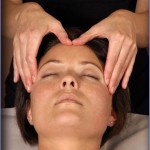 THE DANCE OF MASSAGE blog post June 7, 2013 Adapted from article “Routines Done Right” (written by Ann Williams) in ABMP Magazine Massage & Bodywork
THE DANCE OF MASSAGE blog post June 7, 2013 Adapted from article “Routines Done Right” (written by Ann Williams) in ABMP Magazine Massage & Bodywork
“Great massage routines are like a beautiful dance. The famous ballet choreographer George Balanchine often choreographed dance sequences in groups of three. He felt that the first time an anudience saw a dance sequence, it captured their attention but they did not have time to really see the movement. When the sequesnce was repeated the second time, Balanchine believed the audience studied the movement and analyzed the technique of the dancer. By the third time the audience could simply enjoy
Massage has the potential to have the same effect on the client. Through the use of repeated strokes (generally three times) the client experiences a flow similar to that described by Balanchine. According to ABMP’s Massage and Bodywork Magazine (Sept 2012) “a client has time to be surprised by the sensation, analyze what is happening, and then settle into enjoying the series of strokes.
Opening and Closing the Massage/Bodywork
The two most important actions a Massage Therapist can do are to to open and close the massage session. This creates a “frame” around the entire massage session because it defines what is coming in the beginning of the massage and brings closure to the end of the massage.
Opening the Massage
Some suggestions for opening the massage. “The opening is a simple moment, yet it can affect the client’s trust level and willingness to allow his or her body to let go and relax.
• Have your room entirely ready before the client enters the room. Make sure you have your lotion and everything you need ready.
• Create a calm and relaxed atmosphere through soft music, dimmer lighting
• Check yourself—Am I grounded? Am I ready to be fully present with this client?
• Offer a verbal greeting
• Make initial contact with the client’s body. If they are prone, put one hand on the upper back and one on the lower back and do a gentle rocking motion or holding position. If they are supine you may want to gently hold the head or the feet of the client. If you have had the specialized training in Cranio Sacral we offer at Renaissance Massage College you may want to check the cranial rhythms. (Note: I do this before any bodywork and I close the session with checking the cranial rhythms because they will calm and smooth during your session).
• Tell the client it is their responsibility to tell you if the comfort level of touch is at the level they prefer. Ask them several times during the massage about the level of strokes.
Closing the Massage
“Closing the massage is just as important and should leave a client feeling balanced, complete, and peaceful. You want the client to know the massage is ending before it actually ends and to start to return to normal waking consciousness without being jarred awake.
• Avoid anything that might be seen as abrupt. No comments like –“Time’s up. See you in the waiting room” and then just walking out.
• You might ask clients to take a deep breath and to begin to return to the surroundings of the room.
• You may choose to (with client’s earlier permission) use a small amount of essential oil and have the client inhale the aroma.
• You could use an auditory clue, like the ringing of a small chime.
• Holding strokes and a soft, gentle voice asking-“how are you feeling?”
• Anything that gently indicates the session is ending (as massage therapists we are in tune with the time however what is a fifty minute massage to us may seem like a 10 minute massage to the client).
Through planning ahead, making sure you are ready and grounded your clients have the opportunity to ensure a great massage, to assist the body to let go of tension and for the client to feel better. The bonus for you—many of these clients return and want you to work on them again.
